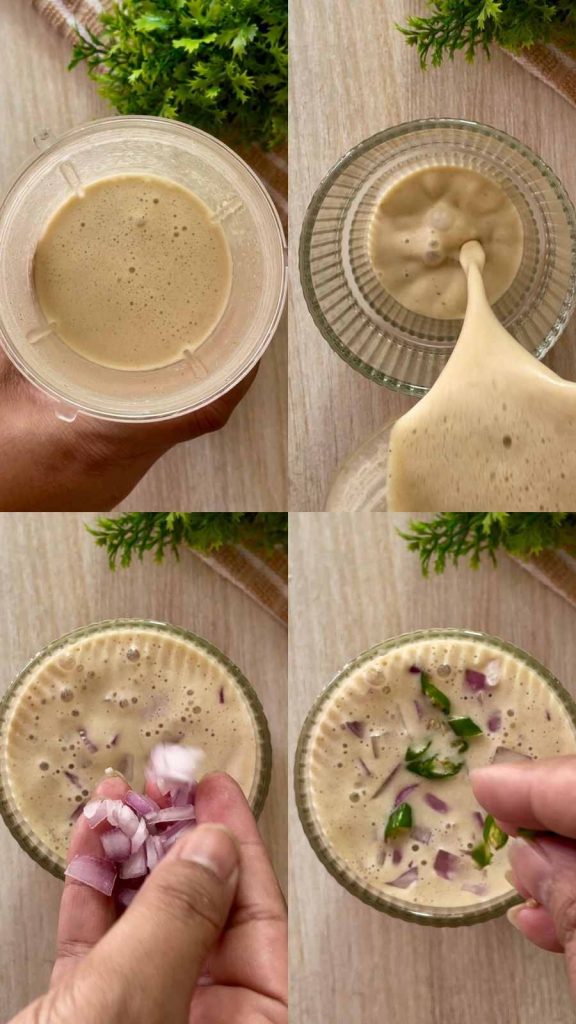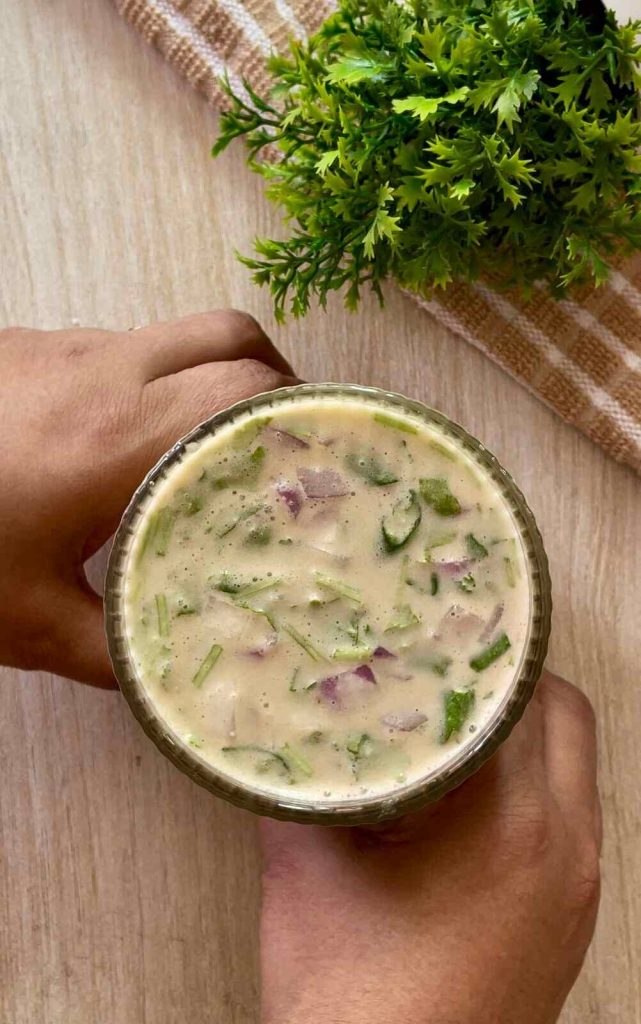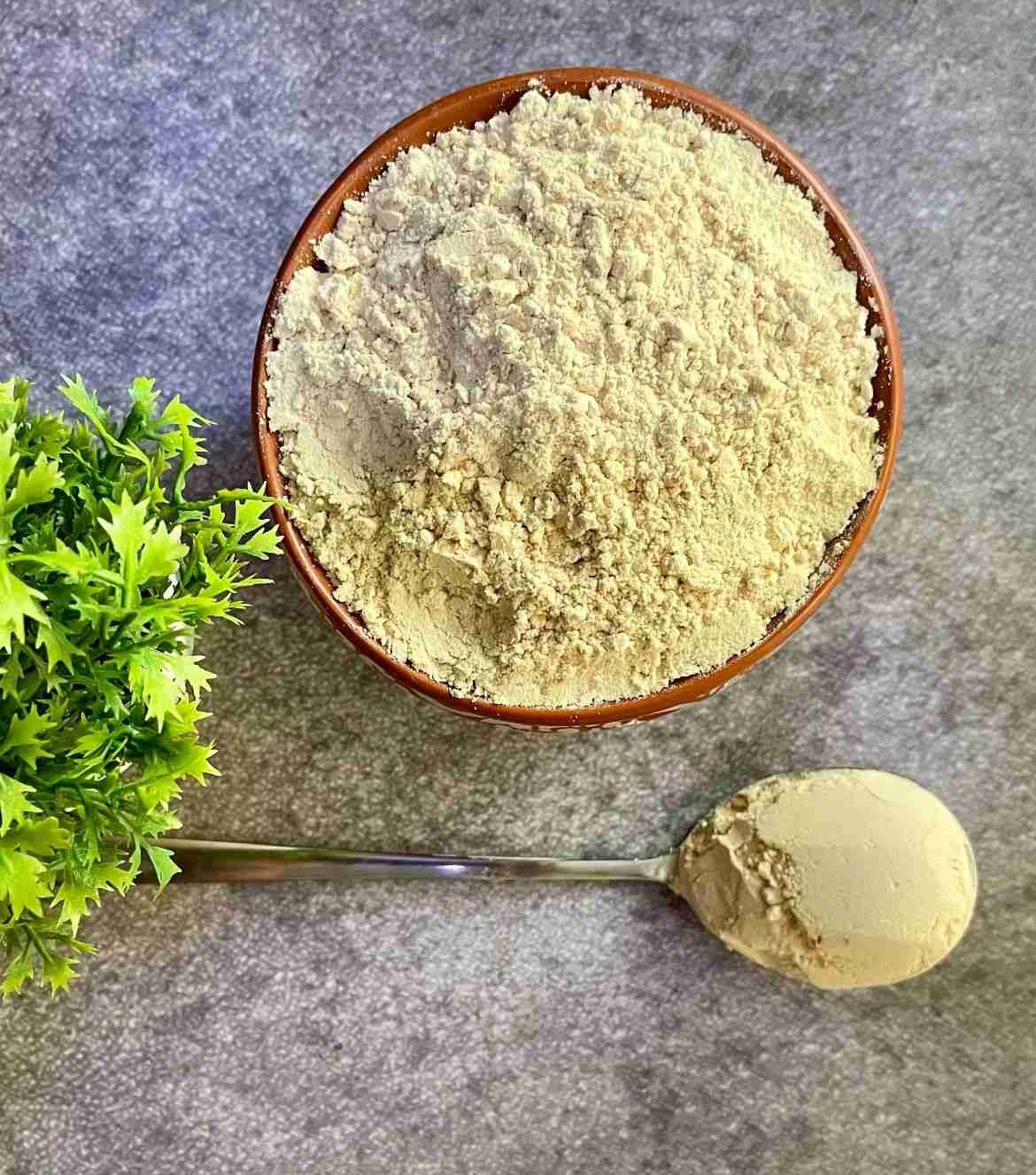
Sattu is finally getting the long awaited attention! Sattu is considered a nutritious food. It is a rich source of protein, Sattu powder mixed with buttermilk is a natural and a potent protein shake. According to health experts, it is rich in protein, fibre, calcium, iron, and magnesium. It prevents dehydration and reduces body heat. Below is the step by step recipe of sattu buttermilk.
Ingredients:
2 tablespoons sattu powder
1 cup buttermilk (chach)
1/2 teaspoon roasted cumin powder
1/4 teaspoon black salt
Finely chopped coriander leaves, onion, and green chilies for garnishing
Instructions:
In a jar or bowl, mix together the sattu powder and buttermilk until well combined.
Add the roasted cumin powder and black salt to the mixture and stir until everything is evenly distributed.

If you prefer a smoother consistency, you can blend the mixture in a blender for a few seconds. Taste the sattu buttermilk and adjust the seasoning if necessary, adding more black salt or roasted cumin powder according to your preference. Pour the sattu buttermilk into serving glasses. Garnish with finely chopped coriander leaves, onion, and green chilies.

Serve chilled and enjoy your refreshing sattu buttermilk!

You can make your own sattu at home or you can buy from numerous brands available online as well as offline. In case you are looking for a homemade, preservative free and authentic experience, without getting into hassle of grinding your own, you can always explore Masala Monk’s Sattu Mix, which ships all over India.
Do try the recipe and let me know in comments how it turns out. If you end up adding your own twist and experimenting, let me know as well – maybe I will try it that way and see how it feels.




















